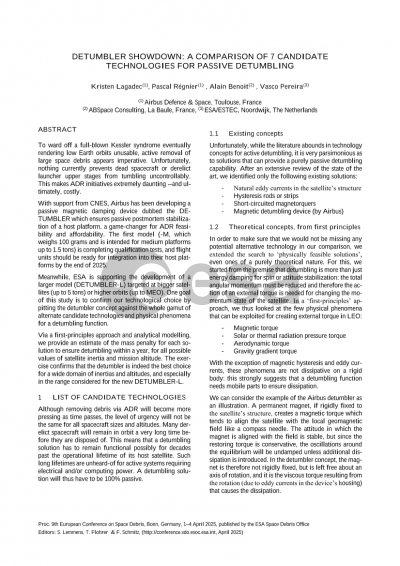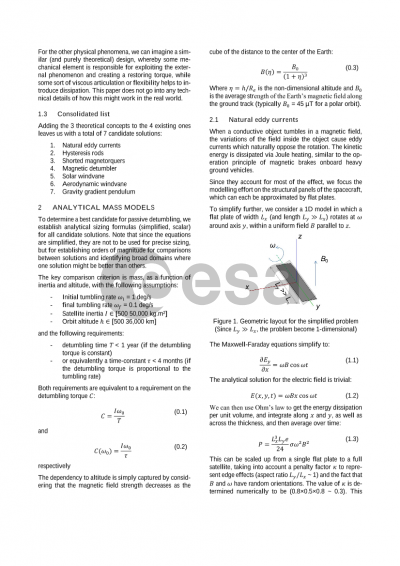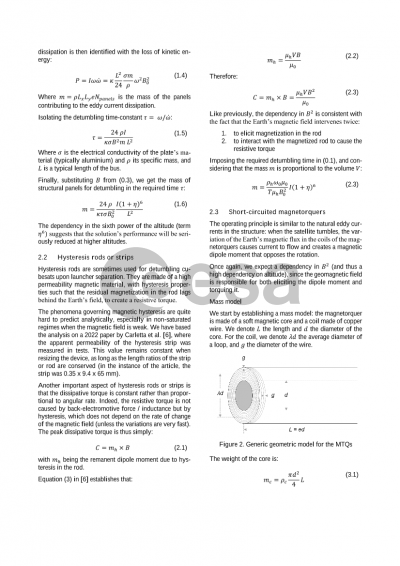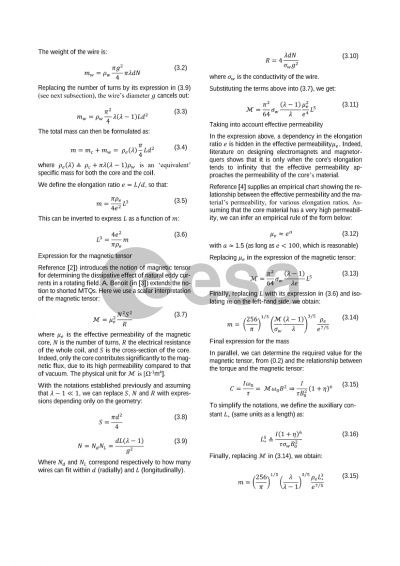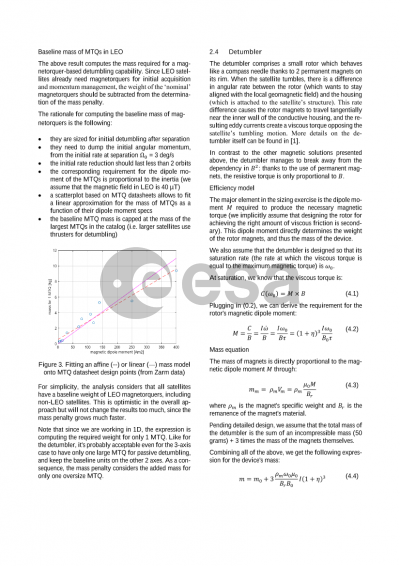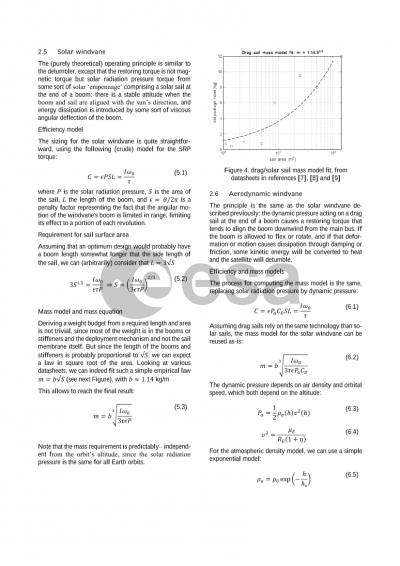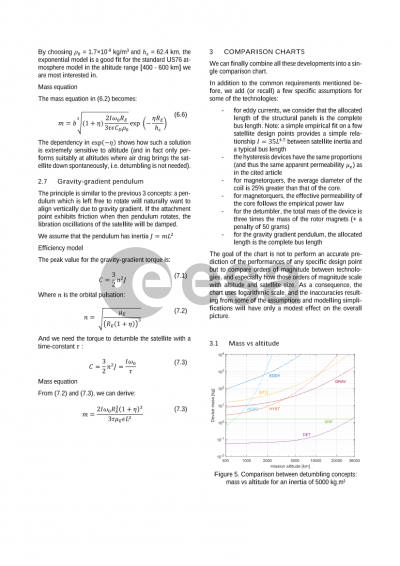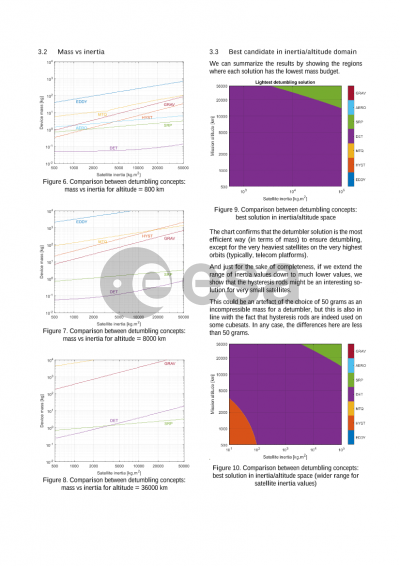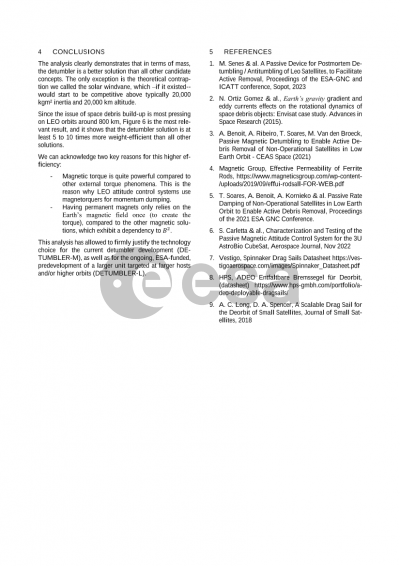Document details

Abstract
To ward off a full-blown Kessler syndrome eventually rendering low Earth orbits unusable, active removal of large space debris appears imperative. Unfortunately, nothing currently prevents dead spacecraft or derelict launcher upper stages from tumbling uncontrollably (either after a failure or collision, or merely from the inexorable compounding of tiny external disturbances). This makes ADR initiatives extremely daunting --and ultimately, costly.
With support from CNES, Airbus has been developing a passive magnetic damping device dubbed the DETUMBLER which ensures passive postmortem stabilization of a host platform, a game-changer for ADR feasibility and affordability. The first model (-M, which weighs 100 grams and is intended for medium platforms up to 1.5 tons) is completing qualification tests, and flight units should be ready for integration into their host platforms by the end of 2025.
Meanwhile, ESA is supporting the development of a larger model (DETUMBLER-L) targeted at bigger satellites (up to 5 tons) or higher orbits (up to MEO). One goal of this study is to consolidate our technological choice by pitting the DETUMBLER concept against the whole gamut of alternate candidate technologies and physical phenomena for a detumbling function. This has led the team to derive 'first-principles' analytical models for the detumbling performance of 7 solutions in total (including the DETUMBLER):
3 solid-state electromagnetic solutions
- natural eddy currents in the spacecraft's structure
- hysteresis strips or rods
- short-circuited magnetorquers
4 solutions based on damped pendulums, with different sources of external restoring torque:
- magnetic torque (the DETUMBLER itself)
- aerodynamic torque (aka a damped windvane)
- solar radiation pressure torque ('solar windvane')
- gravity gradient torque
The analytical models provide an order of magnitude of the mass penalty for each solution to ensure detumbling within a year, for all possible values of satellite inertia and mission altitude. From these, we could identify optimality regions in the inertia-altitude space, where one solution is lighter than all others. Except for very small platforms and very high orbits, this map confirms that the DETUMBLER is indeed the best choice for a wide domain of inertias and altitudes, and especially in the range considered for the new DETUMBLER-L.
Preview
